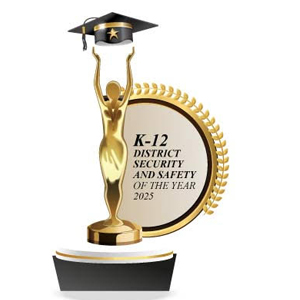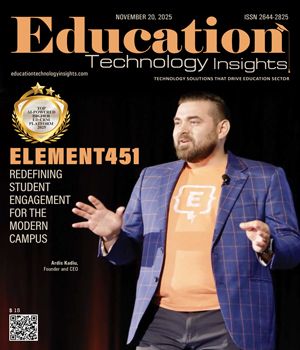THANK YOU FOR SUBSCRIBING
Be first to read the latest tech news, Industry Leader's Insights, and CIO interviews of medium and large enterprises exclusively from Education Technology Insights
Navigating the Digital Evolution in Education
Melanie Hutchinson, Director of Instructional Technology and Online Learning, Lee's Summit R-7 Schools
Melanie Hutchinson is the Director of Instructional Technology and Online Learning at Lee's Summit R-7 Schools. She leads initiatives to integrate technology into the classroom, enhancing digital learning experiences for students. With a passion for innovation, she empowers educators to utilize cutting-edge tools for effective online education.
As the Director of Instructional Technology and Online Learning at Lee's Summit R-7 Schools, I am privileged to work at the forefront of San evolving educational landscape where technology meets learning. Overseeing both K-12 online education and the broader instructional technology for our district’s 19,000 students, I have seen firsthand how the integration of technology can be both a game-changer and a challenge.
My daily responsibilities span two critical areas: managing a fully online learning environment for K-12 students and guiding our district’s use of instructional technology. Our online learning program serves around 1,200 students, offering synchronous learning for K-8 and asynchronous for grades 9-12. This includes everything from coordinating schedules and graduation requirements to ensuring special education services are provided—all in a virtual space.
“As schools embrace AI and other advanced tools, we must ensure that student information remains protected. Balancing cutting-edge technology with safety can feel like a delicate act, especially when you are responsible for thousands of students and their personal data.”
I lead a team of instructional technology specialists who support teachers in integrating technology to create more personalized, blended learning experiences. This role has given me a unique vantage point to see how technology, when used thoughtfully, can elevate student engagement and outcomes.
One of the most significant challenges we face is the rapid pace of technological change. For schools, the adoption of new technology is not just about staying current; it’s also about ensuring that every tool we implement is secure, protects student data, and aligns with our educational goals.
Data privacy and security are at the top of my priority list. As schools embrace AI and other advanced tools, we must ensure that student information remains protected. Balancing cutting-edge technology with safety can feel like a delicate act, especially when you are responsible for thousands of students and their personal data.
In addition, compatibility between tools is another significant issue. As new versions of software are rolled out, they often don't integrate smoothly with existing systems, leading to frustration for both educators and students. What works well on an individual level may not work for a district-wide system, adding to the complexity of implementation.
In the next 24 months, I believe we will continue to see consolidation within the ed-tech industry, with larger companies acquiring smaller platforms. This trend, while driven by business strategy, has the potential to streamline services, making it easier for districts like ours to manage multiple platforms under a single parent company. We've already seen this with companies like PowerSchool acquiring School Messenger, and I expect this trend to accelerate.
AI will also become increasingly embedded in educational tools, further transforming how teachers teach and how students learn. As platforms like Microsoft’s Co-pilot and PowerSchool’s Power Buddy gain traction, we can expect AI to assist in everything from personalized learning paths to administrative tasks, freeing up educators to focus more on direct instruction.
For those of us navigating the intersection of education and technology, my advice is simple: don’t go it alone. Even if you are the only person in your building responsible for instructional technology or online learning, reach out to others in the field. Networking with peers, both inside and outside of education, is critical. Collective problem-solving not only strengthens your professional practice but also leads to better solutions for our students.
The future of education is digital, and while the road ahead will be filled with challenges, it will also be rich with opportunities to create more dynamic, engaging, and equitable learning environments. By staying informed, collaborative, and focused on both innovation and security, we can ensure that the next generation of students is well-prepared for the world ahead.
Read Also
Empowering Educators through Purposeful, Connected and Transformative Learning
Empowering Students to Lead: A New Vision for Civic Learning
The Director's Playbook: Strategic Digital Transformation in Rual Hyper-Growth Districts
The Art and Architecture of Student Support
From At-Risk to At-Promise: The Language Revolution Higher Education Needs
Teaching Tomorrow: How Western Governors University Is Redefining Teacher Preparation

I agree We use cookies on this website to enhance your user experience. By clicking any link on this page you are giving your consent for us to set cookies. More info



















![Udemy [NASDAQ: UDMY]: Online Learning Transformed Udemy [NASDAQ: UDMY]: Online Learning Transformed](https://www.educationtechnologyinsights.com/company_logos/6-7cuaqksu.jpg)






